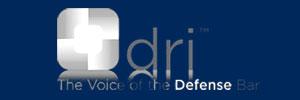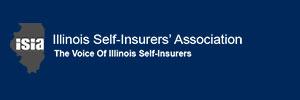Ramirez v. FCL Builders, Inc., 2013 IL App (1st) 123663
March 2014
By Andrew R. Makauskas and Molly P. Connor
The plaintiff, an employee of Sullivan Roofing, Inc., ("Sullivan"), was hurt pushing heavy material across the roof of a warehouse. Sullivan was a subcontractor of FCL Builders, Inc., ("FCL"), the general contractor for the warehouse project. The roofers had been using all-terrain vehicles, ("ATVs"), to move the material, but were told to stop after the practice was determined to be damaging to the roof. The plaintiff brought a negligence claim against FCL. Sullivan was not a party to the litigation.
At the conclusion of the trial, the jury found in favor of the plaintiff and found he suffered $1.985 million in damages. On the jury verdict form, the jury allocated fault as follows:
- Plaintiff: (20%)
- FCL: (40%)
- Sullivan: (40%)
The verdict was $1.58 million after reduction for plaintiff's share of fault.
The trial court denied FCL's post-trial motion for a directed verdict or a new trial. FCL appealed, arguing it had no liability for the plaintiff's injuries as a matter of law; alternatively, FCL maintained a new trial should be granted because the trial court gave improper jury instructions, allowed inadmissible evidence, and failed to sanction the plaintiff for discovery violations. FCL argued it could not be liable for the plaintiff's injuries because it did not know Sullivan employees were engaged in an unsafe work practice and it did not exercise sufficient control over the work site.
As to the trial court's denial of FCL's motion for directed verdict, the Appellate Court noted it was required to consider the evidence in the light most favorable to the plaintiff. The court pointed to evidence presented at trial showing FCL had the right to control the safety of the project and exercised control over the operative details of Sullivan's work when it noticed damage to the roof and ordered work to stop; helped find a solution to the problem; and ordered the roofers to stop using ATVs to move the material. The court found FCL's level of involvement in Sullivan's work meant Sullivan was not completely free to perform its work in its own way, so there was sufficient evidence for a jury to find FCL was vicariously liable for the plaintiff's injuries.
Further, the court found the jury could have reasonably concluded FCL was directly liable for the accident because there was evidence FCL ordered the roofers to stop using the ATVs to move the material, even though FCL knew it would require the roofers to move the material manually. Therefore, the court affirmed the trial court's denial of FCL's Motion for a Directed Verdict.
The court next considered FCL's Motion for a New Trial, finding the trial court erred in two aspects of the jury instructions. First, the court found it was error to instruct the jury a general contractor can be liable if it "retains some control over the safety of the work," even though that instruction was based on Illinois Pattern Jury Instruction number 55.01 ("IPI 55.01"). The court concluded IPI 55.01 is not an accurate statement of Illinois law because a general right to control safety is not sufficient to impose liability under section 414 of the Restatement (Second) of Torts ("section 414"). The court found defendants must have more than "some control" over an aspect of the work before they would incur liability under section 414.
Second, the court held Sullivan should not have been included on the jury verdict form. Section 2-1117 of the Illinois Code of Civil Procedure states a plaintiff's employer cannot be included in the apportionment of fault for determining joint and several liability. The court discussed Ready v. United/Goedecke Services, Inc., 232 Ill. 2d 369 (2008), in which the Illinois Supreme Court held defendants that settled prior to trial could not be included on the jury form. Ready was not dispositive in this case because Sullivan had never been a defendant in the case, so Sullivan could not have settled prior to trial. However, the court stated the reasoning in Ready hinged on the fact that settling defendants could not be included in apportionment of joint and several liability under Rule 2-1117, so under that analysis, a plaintiff's employer could not be included on a verdict form either.
Even though the court found the jury instructions were improper, it held FCL was not entitled to new trial because the instructions did not result in serious prejudice to FCL's right to a fair trial.
The court then affirmed the trial court's decisions to: a) exclude from evidence an incident report; and, b) admit into evidence the contract between FCL and the property owner. Finally, the court found it was proper to allow two of the plaintiff's witnesses to testify, even though they were not properly disclosed under Illinois Supreme Court Rule 213.
The Ramirez decision reinforces the rationale behind Rule 2-1117 and the Ready decision. However, it does not explain why the trial court allowed a non-party to be placed on the verdict form.










